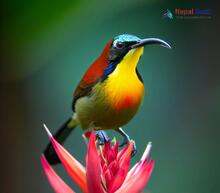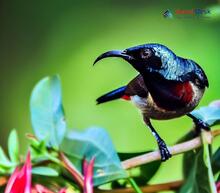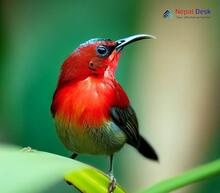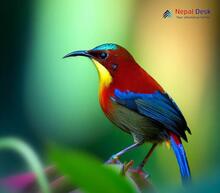Aethopyga: A Fascinating Glimpse into Nepal's Avian Wonders – Classification, Common Features, Evolutionary Relationships, and Nomenclature
Nestled in the heart of the Himalayas, Nepal boasts an abundant and diverse avian population that captivates bird enthusiasts worldwide. Amongst these countless bird species lies the fascinating Aethopyga genus that manifests a vibrant display of colors, intriguing evolutionary relationships, and unique nomenclature.
Classification and Common Features:
The Aethopyga belongs to the Nectariniidae family and comprises approximately 14 species of brilliantly colored, small-sized sunbirds predominantly found in Nepal's lush forests. They are characterized by their narrow, down-curved bills – a feature that enables them to consume nectar conveniently. This feeding behavior benefits both birds and flowering plants alike through pollination. Additionally, these charming avians also complement their diet by hunting insects on the wing.
Evolutionary Relationships:
As members of the Nectariniidae family, Aethopyga sunbirds possess evolutionary relationships with other similar bird families such as Motacillidae (wagtails & pipits) or Passeridae (sparrows & finches). Evidence garnered from genetic analyses suggests a close relationship between sunbirds and flowerpeckers – two families seen participating in symbiotic relationships with plants for shared benefits.
Moreover, understanding evolutionary links assists in identifying potential strategies for species conservation by shedding light on migration patterns, adaptation mechanisms, and gene flow between populations.
Nomenclature:
Typically known as the Crimson Sunbird, Aethopyga siparaja represents one of Nepal's widely renowned sunbird species. It is also interesting to note that Aethopyga employs a combination of Greek terms: "aitho" meaning to scatter or burn and "pyge" referring to tail-feathers. Hence, the moniker highlights the trademark flashy plumage commonly adorning these remarkable birds.
In conclusion, the Aethopyga genus adds an irreplaceable facet to Nepal's rich avian biodiversity. With further research on their classification, common features, evolutionary relationships, and nomenclature, we can develop a holistic understanding of these charismatic birds and their critical role in maintaining ecological equilibrium. Strengthening conservatory efforts to preserve not only the Aethopyga sunbirds but also their fragile habitats will ensure that future generations may continue to marvel at these delightful natural wonders.




